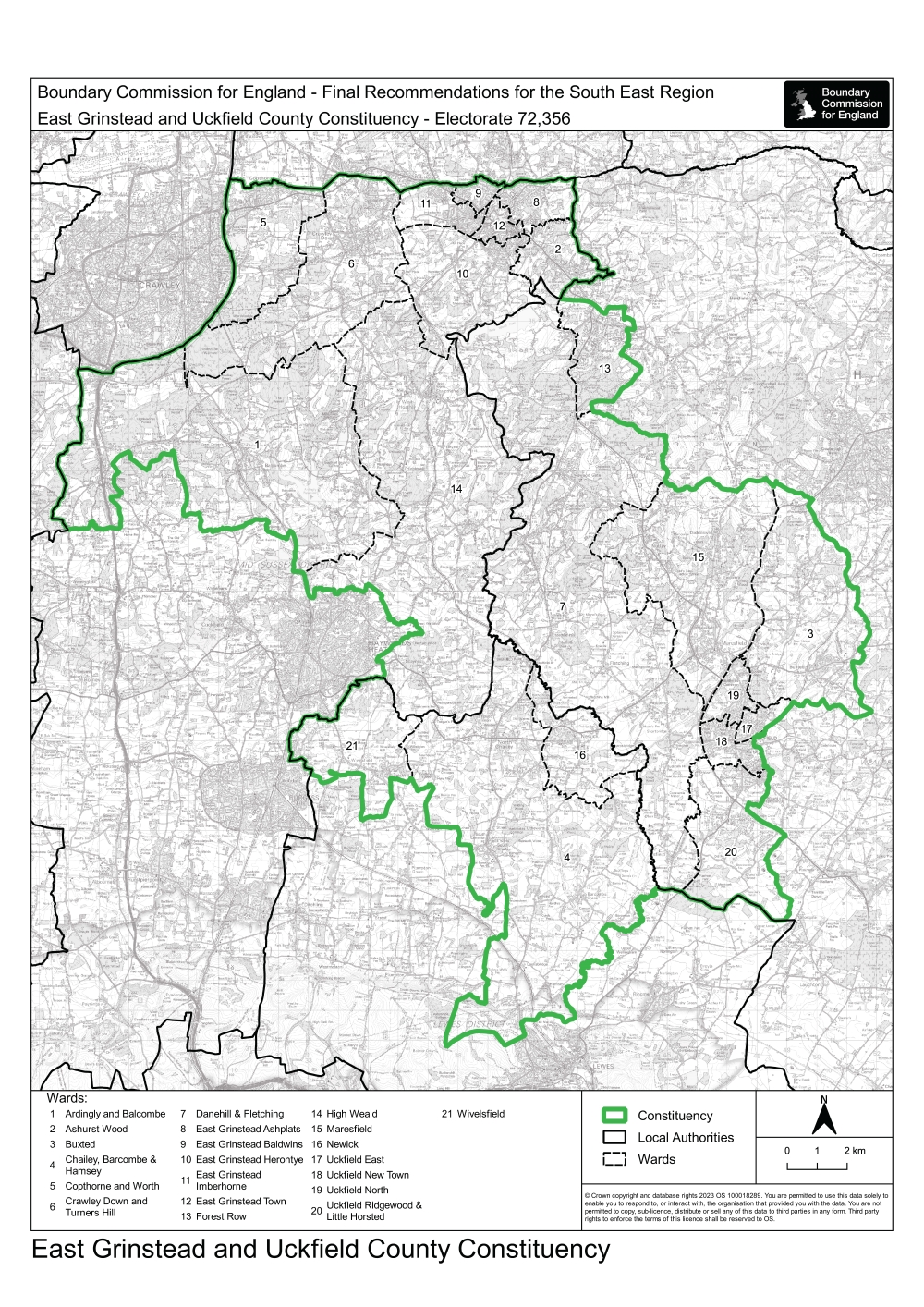Following confirmation by the Prime Minister on 22 May 2024, it has been announced that the next General Election will take place on Thursday, 4 July 2024.
This has meant that Parliament will be dissolved as of 30 May 2024, and campaigning will take place over six weeks up to the date of the election itself.
With Uckfield being affected by the government’s boundary review in 2023, this will be the first General Election where the town is part of the newly formed East Grinstead and Uckfield constituency.
To explore what this means and the key information residents need to be aware of ahead of the upcoming election, we provide an overview below.
Once the result of the 2024 UK General Election is confirmed, Uckfield is guaranteed to be served by a new Member of Parliament (MP).
The incumbent MP for Wealden – the constituency which currently serves Uckfield – Nusrat Ghani will be standing in the new Sussex Weald constituency, which is situated to the east of the Uckfield parish boundary.
The parishes of Framfield, East Hoathly with Halland and Hadlow Down, to the east of Uckfield, will all be part of the Sussex Weald constituency.
By comparison, the parishes of Uckfield, Little Horsted and Buxted will all form part of the East Grinstead and Uckfield constituency.
The full list of wards included within the East Grinstead and Uckfield Constituency is as follows:
1. Ardingly & Balcombe
2. Ashurst Wood
3. Buxted
4. Chailey, Barcombe & Hamsey
5. Copthorne and Worth
6. Crawley Down and Turners Hill
7. Danehill & Fletching
8. East Grinstead Ashplats
9. East Grinstead Baldwins
10. East Grinstead Herontye
11. East Grinstead Imberhorne
12. East Grinstead Town
13. Forest Row
14. High Weald
15. Maresfield
16. Newick
17. Uckfield East
18. Uckfield New Town
19. Uckfield North
20. Uckfield Ridgewood & Little Horsted
21. Wivelsfield
The official list of candidates for the new constituency was published on 7 June, featuring the completed list below:
Christina Nanna Mary Coleman – Green Party
Ben Sebastian Cox – Labour Party
Mims Davies – Conservative and Unionist Party
Benedict Dempsey – Liberal Democrats
Ian Gibson – Independent
William Jeffrey Highton – English Democrats
For more information on each of the candidates and updates, please visit the following websites:
The Electoral Commission – https://www.electoralcommission.org.uk/i-am-a/voter/your-election-information
Who Can I Vote For? – https://whocanivotefor.co.uk/

Local and national media report on election results. Many provide live coverage of the results as they happen.
Local authorities publish results for constituencies in their area.
The Electoral Commission publishes the national election results. It also publishes results for individual constituencies.
Following each general election, the House of Commons Library produces a briefing paper providing full results and analysis.
To vote at the General Election on 4 July 2024, residents will need to be registered to vote in the correct constituency.
You can use the Gov.uk website to register to vote for the first time or to update your details if you have had any changes of address, name or nationality, here: https://www.gov.uk/register-to-vote
If you live in England and Northern Ireland, you must meet the following criteria to register to vote:
You must be aged 16 or over.
You can register to vote if you’re a British citizen or an Irish citizen.
You can also register if you have permission to enter or stay in the UK, Channel Islands or Isle of Man – or you do not need permission – and you’re a:
The Gov.uk website has online forms and paper forms to register to vote.
Polls will be open from 7am to 10pm on Thursday, July 4.
People who have not yet registered to vote, or are not sure if they are eligible, have until June 18 to submit an application, or June 19 if they want to vote by post.
Anyone who wants to apply for a proxy vote will have until June 26 to apply.
You can only apply for a proxy vote under certain circumstances, including: being away on polling day, being registered as an overseas voter, having a medical issue or disability, and not being able to vote in person because of work or military service.
Your proxy should be someone you trust to vote on your behalf. You’ll need to tell them which candidate you want to vote for.
If you intend on voting in person you will receive a polling card in the post that will tell you where to go. You will only be allowed to vote at the address given on your card
For the first time in a General Election, everyone must show photo ID when voting in person in England, Scotland and Wales.
The photo on your ID must look like you and you can still use your ID even if it has expired, according to the government’s website. Anyone voting on behalf of someone else will still need to bring their own ID.
The types of photo ID accepted include:
You can also use one of the following travel passes as photo ID when you vote:
The name on your ID must match your name on the electoral register. If it doesn’t, you’ll need to either:
Anyone who doesn’t have an accepted form of ID will have to apply for a free ‘Voter Authority Certificate’. To do this, you will need to apply online or by post and provide:
The Voter Authority Certificate cannot be used in Northern Ireland.